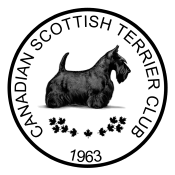Travel by Car & General Tips to Remember
Ensure that your pet’s vaccinations are up to date, including kennel cough, so that your pet can be boarded if necessary. Check with your veterinarian about any disease concerns in areas you are traveling to. Preventative measures are recommended for heart worm disease, fleas and other parasites.
Crossing the border into the U.S. and back into Canada will require proof of your pet’s rabies vaccination. It’s a good idea to take all your pet’s health records with you.
Give food and water more sparingly than usual a few hours before and during trip. Excitement and stress may lead to digestive upsets. Your veterinarian suggests that you avoid altering your pet’s diet while away from home.
Be sure your pet has identification tags including a contact number that can easily be traced to you should you become separated from your pet.
During the summer months, be aware that hyperthermia can strike quickly. Never leave your pet unattended in a vehicle during warm months.
Remember to bring a leash as well as a traveling crate or appropriate restraint mechanism (pet seatbelt). Make sure your pet is restrained before vehicle doors are opened.
Make sure your pet is in good health. The stress of travel may be detrimental to pets in less than good health.
Travel By Air
Air travel is a major concern for many pet owners. You can minimize the chances of an unpleasant experience by following a few guidelines.
Regulations state that dogs and cats must be at least 8 weeks old before flying.
Current health and rabies vaccination certificates will be required.
Contact the airline well in advance to check regulations and services. Transporting pets on some aircraft is not permitted during winter months (Oct.1 – April 30).
Try to book a direct, midweek flight or one with a minimum of stops.
During warmer periods, reduce risk of overheating by choosing early morning or late evening flights.
The proper cage, available from most airline and pet shops, should have the following features:
Large enough to let the animal stand, turn and lie down.
Leak proof bottom covered with plenty of absorbent material.
Ventilation on opposite sides, with exterior rims or knobs to prevent blocked airflow.
Label “LIVE ANIMALS” with arrows indicating upright position and your name, address and phone number. Feeding and emergency instructions should be attached.
Accommodations
Check ahead to make sure hotels, campgrounds and your friends accept pets – don’t assume they do. A list of “Pet Friendly” accommodations is available through the Alberta Motor Association.
Consider what to do with your pet while visiting attractions or eating in restaurants that don’t welcome pets.
Camping With Pets
Trouble can arise quickly in country settings. Skunks, porcupines, snakes and other creatures can bite or injure your pet. To avoid this danger, keep your pet in sight and on a leash and always be considerate of wildlife and other campers.
Upon Return…
A health examination following your trip should be considered to determine if any internal parasites (roundworms, hookworms, heart worms) or external parasites (ticks, fleas) were picked up in contaminated exercise or wooded areas.
Presented by the Alberta Veterinary Medical Association
Views: 1204





